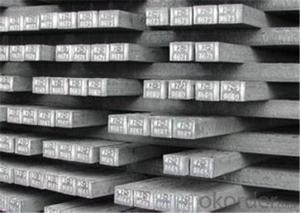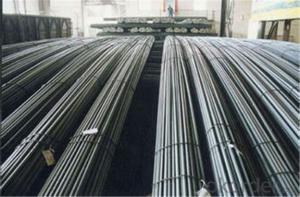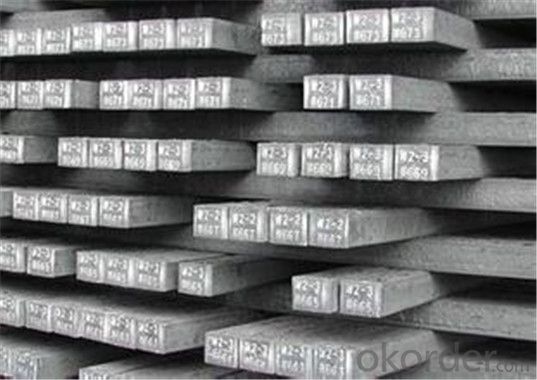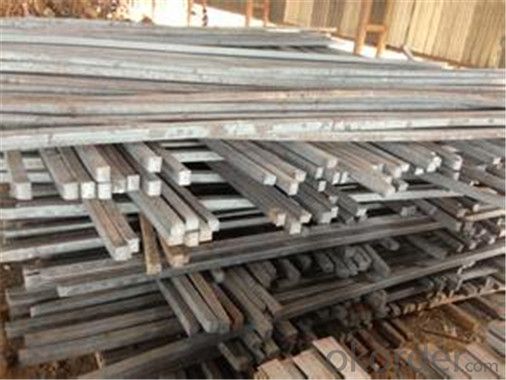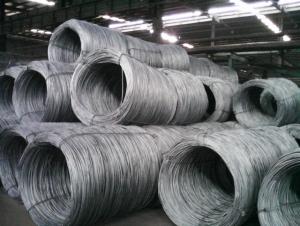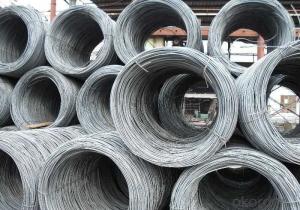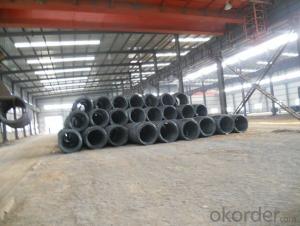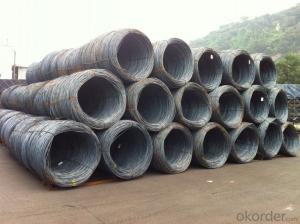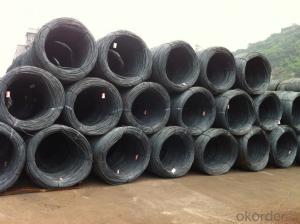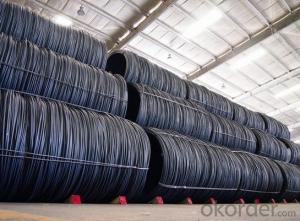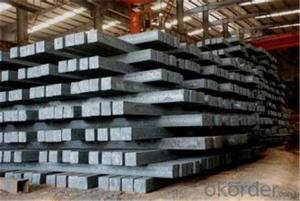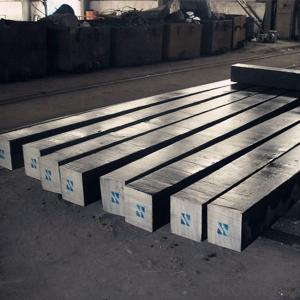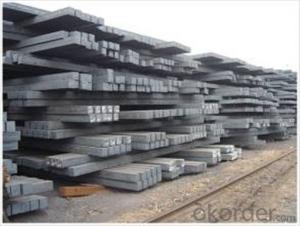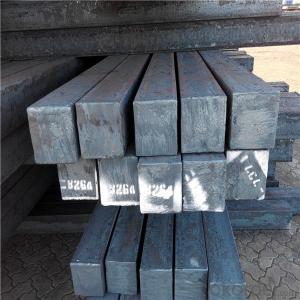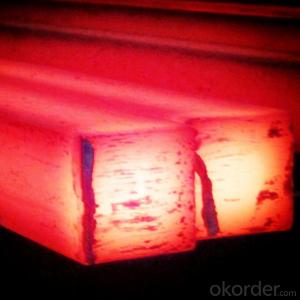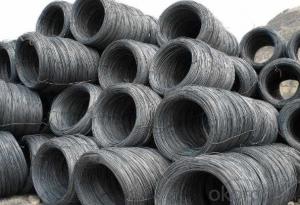Square Steel Billets Hot Sale 3SP/4SP in China
- Loading Port:
- Tianjin
- Payment Terms:
- TT OR LC
- Min Order Qty:
- 300 m.t.
- Supply Capability:
- 45555555 m.t./month
OKorder Service Pledge
OKorder Financial Service
You Might Also Like
Specification
Description of steel billet:
Our company is recognized by ISO9001:2008
1. hot rolled wire rod
2. material: Q195-235
Festures of steel billet:
Model NO.: Q195/215/235/345/45#/ASTM A36, JIS SS400
Standard: AISI, JIS, ASTM, DIN, BS, GB
Technique: Hot Rolled
Grade: Q195/215/235/345/45#/ASTM A36, JIS Ss400
Dimensions: 20*20-150*150mm
Length: 6-12m or as Required
Packaging: In Bundle
Specifications of steel billet:
Size | 60*60/90*90/100*100/120*120/150*150 |
Length | 6000mm-12000mm |
Standard | GB |
Applicaton | To produce bars or other applications |
Grade | Q195/Q235/Q275/3SP/5SP/20MnSi |
Packing terms | TT/LC |
Package | Mill's standard packing or as client's requirment |
Delivery time | Within 10-30 days after receiving the deposit or LC |
Images of steel billet:
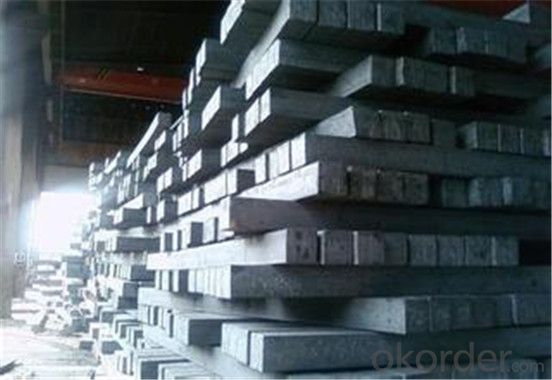
FAQ:
1. What is your package?
Packing situation: standard seaworthy packing or as customer required.
2. How long is the lead time?
Delivery time: 45 days after order confirmed.
3. What payment term do you accept?
Payment: T/T or L/C at sight.
- Q: How is steel wire rod used in the manufacturing of wire shelving?
- Steel wire rod is used in the manufacturing of wire shelving as the primary material for creating the wire shelves. It is first shaped and cut into appropriate lengths, and then welded or joined together to form the shelving structure. The steel wire rod provides strength and durability, ensuring that the wire shelves can support heavy items and withstand daily use. Additionally, the wire rod can be coated or treated to enhance corrosion resistance, making the wire shelving suitable for various environments, including homes, offices, and commercial spaces.
- Q: What are the different types of steel wire rod coatings used for improved ductility?
- Some of the different types of steel wire rod coatings used for improved ductility include phosphate coatings, zinc coatings, and polymer coatings. These coatings enhance the flexibility and malleability of the steel wire rod, making it more pliable and less prone to cracking or breaking.
- Q: How is steel wire rod used in the manufacturing of wire for telecommunications cables?
- Steel wire rod is an essential component in the manufacturing of wire for telecommunications cables. The process begins with the production of steel wire rod, which is a long, cylindrical billet made of steel. This wire rod is then processed and transformed into a wire that is suitable for telecommunications cables. To manufacture wire for telecommunications cables, the steel wire rod undergoes several steps. Firstly, it is cleaned and descaled to remove any impurities that may affect the quality of the wire. The wire rod is then heated and passed through a series of rollers to reduce its diameter and increase its length. This step is known as wire drawing and is crucial in achieving the desired thickness and strength of the wire. Once the wire has been drawn to the required size, it is further processed to ensure its quality and reliability. The wire is annealed, a process in which it is heated and slowly cooled to relieve internal stresses and enhance its flexibility. This makes the wire more suitable for handling and installation in telecommunications cables. After annealing, the wire is coated with a layer of insulation material, such as polyethylene or polyvinyl chloride (PVC). This insulation provides electrical insulation and protects the wire from external factors that may damage its conductivity, such as moisture or extreme temperatures. The final step in the manufacturing process is to twist multiple wires together to form a cable. Steel wire rod is used as the core strength member within the cable, providing structural support and tensile strength. This ensures that the cable can withstand the tension and bending forces it may encounter during installation and operation. In summary, steel wire rod is a crucial component in the manufacturing of wire for telecommunications cables. It undergoes a series of processes, including cleaning, wire drawing, annealing, and insulation, to create a wire that is suitable for use in telecommunications applications. The strength and reliability of steel wire rod make it an ideal choice for providing the necessary structural support and durability required in telecommunications cables.
- Q: How is steel wire rod used in the production of wire mesh for industrial sieving?
- Steel wire rod is a crucial component in the production of wire mesh for industrial sieving. Wire mesh is commonly used in various industries, such as mining, construction, and agriculture, for the purpose of separating and classifying different materials based on their size and shape. The steel wire rod serves as the raw material for wire mesh production. It is first processed through a series of manufacturing steps to transform it into a suitable form for creating the mesh. The wire rod is typically drawn through a series of dies to reduce its diameter and increase its length. This process is known as wire drawing and results in a thin and elongated wire. Once the wire rod has been drawn, it is then woven or welded together to form the wire mesh. The weaving process involves interlacing the wires in a crisscross pattern, creating a strong and durable mesh structure. On the other hand, the welding process involves fusing the wires together at their intersections using heat or pressure, resulting in a solid and stable mesh. The choice between weaving and welding depends on the specific requirements of the application. Weaving is commonly used for producing wire mesh with smaller openings and finer mesh sizes, while welding is preferred for larger openings and heavier wire diameters. The wire mesh produced from steel wire rod offers several advantages for industrial sieving. Firstly, steel is a highly durable and robust material, capable of withstanding harsh environments and heavy loads. This ensures that the wire mesh can endure the constant impact of materials during the sieving process without losing its structural integrity. Additionally, steel wire rod provides excellent tensile strength, allowing the wire mesh to maintain its shape and resist deformation under tension. This is particularly important for applications that involve high-pressure sieving or require the mesh to be stretched tightly over a frame. Moreover, steel wire rod can be manufactured with different coatings or treatments to enhance its resistance to corrosion, abrasion, or other forms of wear and tear. This further extends the lifespan of the wire mesh, making it suitable for long-term industrial use. In summary, steel wire rod is an essential component in the production of wire mesh for industrial sieving. Its versatility, durability, and strength make it an ideal raw material for creating wire mesh that can withstand rigorous sieving applications in various industries.
- Q: What are the different surface defects that can impact the tensile strength of steel wire rod?
- Some of the different surface defects that can impact the tensile strength of steel wire rod include scratches, cracks, pits, and scale. These defects can weaken the structure of the wire rod and reduce its ability to withstand tension, resulting in a lower tensile strength.
- Q: What are the common shaping methods for steel wire rod?
- The common shaping methods for steel wire rod include drawing, rolling, and extrusion.
- Q: What are the different factors that affect the mechanical properties of steel wire rod?
- Steel wire rod's mechanical properties can be affected by various factors. These factors comprise steel composition, heat treatment, rolling process, and impurity presence. Steel composition significantly determines its mechanical properties. Different elements, such as carbon, manganese, and silicon, are added in varying quantities to achieve specific properties. For example, higher carbon content boosts steel strength and hardness, while alloying elements like chromium or nickel enhance corrosion resistance. Heat treatment also has a significant impact on steel wire rod's mechanical properties. This process involves heating the steel to a specific temperature and then rapidly or slowly cooling it to alter its microstructure. Strength, hardness, and toughness can all be affected. Quenching and tempering increase hardness and strength, while annealing improves ductility. The rolling process, which involves mechanically deforming the steel wire rod to reduce its size, also affects its mechanical properties. The amount of reduction, number of passes, and rolling temperature all influence the final properties. Higher reductions and lower rolling temperatures generally result in finer grain structures and improved mechanical properties. Impurities present in the steel, such as sulfur, phosphorus, and non-metallic inclusions, can also impact mechanical properties. These impurities weaken the steel, reducing ductility and toughness. Thus, maintaining low impurity levels through proper refining and alloying processes is crucial to achieve desired properties. In conclusion, steel wire rod's mechanical properties are influenced by multiple factors: steel composition, heat treatment, rolling process, and impurity presence. Understanding and controlling these factors is essential in producing steel wire rods with desired properties for various applications.
- Q: What are the common applications of high carbon steel wire rod?
- Due to its distinct qualities, high carbon steel wire rod is widely used for various purposes. One prominent use is in the manufacturing of springs, which are commonly found in automotive suspension systems and industrial machinery. The wire rod's high carbon content gives it exceptional strength and durability, allowing it to endure the constant stress and tension experienced by springs. Another prevalent application is in the production of wire ropes and cables. High carbon steel wire rod is highly favored for this purpose due to its remarkable tensile strength, enabling it to bear heavy loads and resist deformation. Wire ropes and cables made from high carbon steel wire rod are extensively utilized in the construction, mining, and transportation industries. Piano wire manufacturing is another significant utilization of high carbon steel wire rod. The wire's high strength and outstanding resilience make it an ideal choice for producing piano strings that can withstand the tension and vibration needed to produce the desired musical notes. Moreover, high carbon steel wire rod is frequently employed in the production of wire mesh and wire fencing. Its strength and durability make it suitable for creating fences and enclosures that offer security and containment in diverse settings, including residential, agricultural, and industrial areas. In conclusion, high carbon steel wire rod is commonly used in the production of springs, wire ropes and cables, piano wire, and wire mesh or fencing. Its unique properties make it the preferred choice for these applications, providing strength, durability, and the ability to withstand tension and stress.
- Q: How are steel wire rods used in the production of electrical cables for power transmission?
- Steel wire rods are an essential component in the production of electrical cables for power transmission. These rods are used to provide strength and support to the cables, ensuring they can withstand the high voltage and mechanical stress involved in transmitting electricity over long distances. The steel wire rods are typically made from high-quality carbon or alloy steel, which offers excellent tensile strength and durability. These properties make them suitable for withstanding the heavy loads and tension that electrical cables experience during power transmission. During the manufacturing process, the steel wire rods are first drawn through a series of dies to reduce their diameter and increase their length. This process, known as wire drawing, helps to refine the steel's mechanical properties and improve its uniformity. It also allows for precise control over the wire's dimensions, ensuring it meets the required specifications for power transmission cables. Once the wire rods are drawn to the desired size, they are further processed to create the individual strands that make up the electrical cables. These strands are formed by twisting multiple steel wire rods together, creating a strong and flexible core that can carry the electrical current. After the strands are formed, they are typically coated with a layer of insulation material, such as PVC (polyvinyl chloride) or XLPE (cross-linked polyethylene). This insulation layer protects the steel wire rods from corrosion and provides electrical insulation, preventing any leakage or short-circuits during power transmission. In summary, steel wire rods play a crucial role in the production of electrical cables for power transmission. They provide the necessary strength and support to withstand the mechanical stress and high voltage involved in transmitting electricity over long distances. By incorporating steel wire rods into the cables, manufacturers can ensure reliable and efficient power transmission systems.
- Q: What is the standard size range for steel wire rod?
- The specific application and industry requirements dictate the typical size range for steel wire rod. Generally, steel wire rod is available in diameters ranging from 5.5 millimeters (mm) to 25 mm. These sizes are commonly utilized in the construction, automotive, manufacturing, and electrical industries. It is crucial to consider that the size ranges of different steel wire rod grades are determined by their intended use and mechanical properties.
Send your message to us
Square Steel Billets Hot Sale 3SP/4SP in China
- Loading Port:
- Tianjin
- Payment Terms:
- TT OR LC
- Min Order Qty:
- 300 m.t.
- Supply Capability:
- 45555555 m.t./month
OKorder Service Pledge
OKorder Financial Service
Similar products
Hot products
Hot Searches
Related keywords
